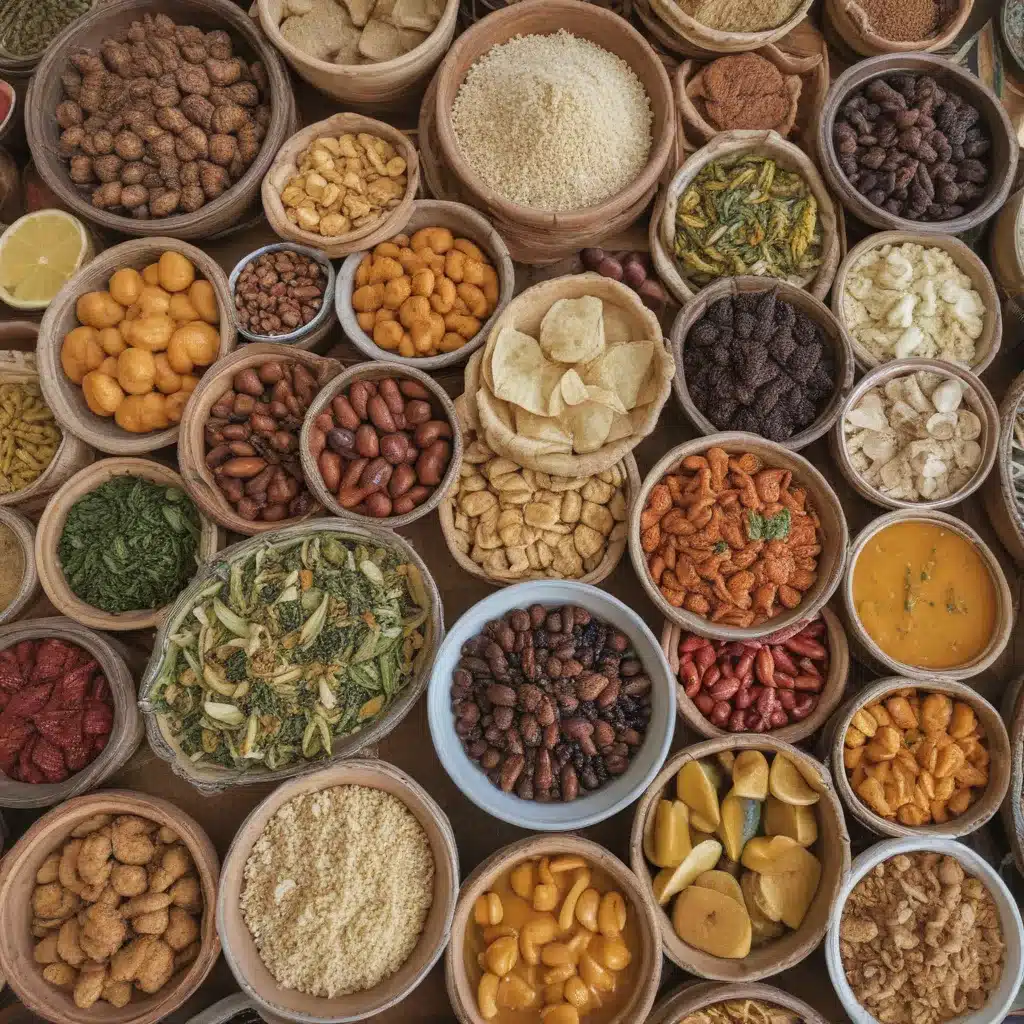
Uncovering the Culinary Wonders of Morocco in New York City
As I step through the vibrant blue doors of El Bahia, the familiar scents of spices and simmering tagines transport me back to the bustling souks of Marrakech. This Moroccan restaurant in the heart of New York City has become a sanctuary where I can indulge in the flavors of my adopted homeland, reminding me of the culinary richness that lies within the Moroccan pantry.
The Spice Route to Morocco
My Moroccan adventure began nearly two decades ago when I married a man from Casablanca. As I immersed myself in his culture, I discovered a culinary landscape far beyond the stereotypical couscous and mint tea. The diverse flavors of Morocco are a testament to its storied history as a crossroads of civilizations, where the ancient Spice Route intersected with the Mediterranean and African influences.
From the fragrant cinnamon and ginger of the Atlas Mountains to the tangy preserved lemons of the coastal regions, each ingredient in the Moroccan pantry tells a story. It’s a story of traders and travelers who brought exotic spices from across the globe, blending them with local produce to create a cuisine that is both deeply rooted and endlessly innovative.
The Art of Blending
At the heart of Moroccan cooking lies the art of blending. Spice mixtures like ras el hanout, a complex blend of up to 30 different spices, are meticulously crafted to create depth and complexity in every dish. These spice blends are the building blocks of Moroccan cuisine, infusing tagines, couscous, and even breads with their distinctive aromas.
As I peruse the menu at El Bahia, I’m reminded of the countless hours I’ve spent in Moroccan kitchens, watching the chefs skillfully combine ingredients to achieve the perfect balance of sweet, sour, and savory. The slow-cooked lamb tagine, for instance, is a labor of love, with layers of flavors that unfold with every bite – the richness of the meat, the fragrance of the saffron, the tang of preserved lemons, and the gentle heat of the chili peppers.
Discovering the Moroccan Pantry
But Moroccan cuisine is more than just tagines and couscous. As I delve deeper into the Moroccan pantry, I uncover a world of unexpected delights. Take the humble chickpea, for example. In Morocco, this humble legume is transformed into a creamy puree, known as hummus, that serves as the base for a variety of dishes. At El Bahia, I’ve indulged in a spicy shrimp dish perched atop a silky chickpea puree, a harmonious blend of textures and flavors that delights the senses.
Another Moroccan staple that has captured my heart is the preserved lemon. These tart, salty citruses are a versatile ingredient, adding a bright, tangy note to tagines, salads, and even cocktails. I’ve even discovered the joy of making my own preserved lemons at home, a simple process that yields a pantry staple that elevates any dish.
Embracing the Unexpected
But the true gems of the Moroccan pantry are often the most unexpected. Take the humble carrot, for instance. In Morocco, carrots are transformed into a sweet, earthy condiment known as “carrot salad.” This bright orange relish, studded with aromatic spices and a touch of vinegar, is a revelation, elevating even the simplest of dishes.
Or consider the humble chickpea, which takes center stage in the Moroccan dish known as “bessara.” This creamy, comforting soup is a testament to the versatility of this humble legume, showcasing how Moroccan cooks can transform the most basic of ingredients into something truly extraordinary.
Celebrating Seasonal Bounty
Throughout the year, the Moroccan pantry evolves, reflecting the bounty of the seasons. In the spring, I eagerly anticipate the arrival of fresh, tender broad beans, which are sautéed with garlic and cumin, or incorporated into hearty stews. As summer approaches, the markets overflow with vibrant, juicy tomatoes, which are transformed into the tangy, herb-infused Moroccan salad known as “salad mechouia.”
And when the air turns crisp in the fall, the Moroccan pantry offers up a wealth of root vegetables – from earthy beets to sweet potatoes – that are roasted, mashed, and even incorporated into pastries. It’s a testament to the ingenuity of Moroccan cooks, who have mastered the art of coaxing the most out of every ingredient.
Sharing the Riches of the Moroccan Pantry
As I savor the flavors of El Bahia, I’m reminded of the countless hours I’ve spent in Moroccan kitchens, learning from the masters. I’ve watched in awe as they effortlessly combined the simplest of ingredients – a pinch of cumin, a squeeze of lemon, a handful of fresh herbs – to create dishes that are both comforting and complex.
And now, I’m thrilled to share the riches of the Moroccan pantry with the diners at El Bahia. From the fragrant tagines to the unexpected delights like carrot salad and bessara, each dish is a celebration of the diverse and dynamic flavors that make Moroccan cuisine so unique.
So, come with me on a journey through the Moroccan pantry, and discover the hidden gems that have captivated my heart and tantalized my taste buds. Let the aromas and flavors of El Bahia transport you to the bustling souks of Marrakech, where the ancient Spice Route continues to weave its magic, one delicious bite at a time.


